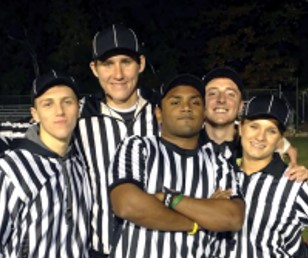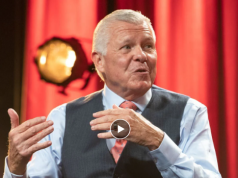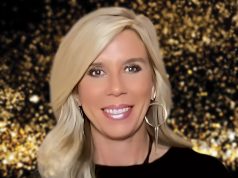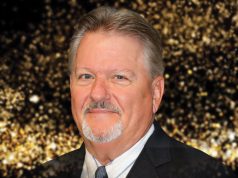Even before the pandemic, state high school athletic associations faced a significant shortage of officials across the country, which was affecting games. Heavy recruiting is and will be necessary in all sports, especially targeting young officials who will be part of our industry for decades, in order to combat this crisis in the years ahead.
Anyone currently recruiting officials knows the sports officiating industry faces an uphill battle. Work, family, a social life all consume time, and time is extremely valuable. Time is a deterrent for young officials, as is the badgering officials receive from the stands and sidelines. To successfully recruit new, young officials, the sports officiating industry must overcome these and other hurdles, including:
- Up-front costs to become an official.
- Traditional means of recruitment no longer work: email or job fairs at local schools, for example.
- Poor sportsmanship has hit an all-time high and millennials prefer to avoid that scrutiny.
- Conversations on pay no longer peak interest. Millennials want to feel as though they belong to something greater, something that could pose a challenge to officiating recruiters or serve as a selling point: “Join the ranks of sports officials and be part of a team helping to improve the game landscape.”
How can we recruit new officials, especially those who are under the age of 30, who will officiate for many years? The answers aren’t easy. Modifying what many states do for recruitment, implementing new techniques, and phasing out old unsuccessful attempts at recruiting all must be put on the table to reach the younger generation.
Human resources (HR) expert Laurie Schilling, director of HR for the Nebraska Public Power District (NPPD), has insightful information on how her company recruits its millennial employees.
- Network. As a statewide utility, NPPD has multiple colleges from which it pulls graduates, and it works for both NPPD and the colleges. Officiating can steal a page from this playbook in areas where colleges are located. Officiating groups can network with schools and share the need for sports officials by working with administrators to get the word out.
- NPPD has significantly increased its social media output in reaching out to potential employees under the age of 30. A society of phones, computers and tablets provides unlimited access to social media. NPPD recognizes this and uses it to its advantage.
“(NPPD) posts all of our job openings on our social media pages, to help reach as broad of an audience as possible,” Schilling said. Officiating associations could start setting up social media on various platforms (Twitter, Facebook, Instagram) to get out the word that there is a need for officials. Informational posts could be added, such as when a rules class starts, who to contact if interested and publishing images of officials having fun working games.
Schilling also noted that some traditional means of recruiting just aren’t working. “We have marginal success with traditional job fairs. Career fairs are just one step in the process. We are in elementary, middle and high schools.”
Not only does ingraining the brand into the culture of children through positive outreach show how NPPD is improving its communities, but it also gets the next generation thinking about For officials, this means creating community outreach and establishing relationships with the schools in their area.
Schilling also noted that all employees of NPPD are recruiters for the company, whether they are in the position formally or informally. “Whether it’s talking about NPPD to friends, family and neighbors (or) volunteering in the community, employees are as much the face of NPPD as the orange bumpers on the white vehicles seen across the state.”
What’s Not Working?
Not only do the traditional job fairs not yield results for NPPD, but neither does advertising in newspapers, magazines and other traditional means of media, according to Schilling. More surprisingly, “the pay and benefits discussion doesn’t garner the interest they did previously. We have to paint the bigger picture — the impact of the work,” she said.
Officiating groups need to paint the bigger picture, as recruiters of officials, that if there continues to be a decline in the numbers, one day high school athletic events could be endangered.
Schilling advised sports officiating organizations to “cultivate relationships and make it about more than the job, than the money. Let them know what their contribution means and the impact they have on the bigger picture.”
She touched on a continuing theme among those who officiate sports — relationships. It’s a recurring theme among younger officials. Ian Carey, 27, an NCAA Division II and III women’s college basketball official, spoke about the relationship between officials. “The camaraderie extends beyond the season and outside of basketball,” he said. “I’m able to share life experiences with those I officiate basketball with.”
Connor Hoagland, 27, a D-I college baseball umpire and a D-III college basketball official, agrees. “I enjoy the camaraderie in each organization,” he said. “The game brings so many good people together in ways which they may have never experienced otherwise.” In addition to being on the youthful side, both men have officiated for more than five years.
Bobby Von Rueden, who has been a varsity high school official for four years in Wisconsin and is also under 30, agreed camaraderie is one of the biggest parts of what he enjoys, calling officiating a “social fraternity.” He also pointed to the other things he enjoys about officiating the game.
“Officiating basketball builds on everyday skills such as making quick decisions, management of people and communication — communicating effectively in a quick way. Those skills carry on beyond the game of basketball,” he said.
Share Your Story
What these young officials say is an extremely important message pertaining to recruitment. Officiating groups could take the angle of “come and make X amount of dollars.” Instead, a better tactic is to talk about the relationships built along the way.
Hoagland grew up with a father who officiated basketball. He went to dozens of games with his father, having the fortunate experience of seeing the social side of officiating while sitting in the car for many hours listening to conversations about officiating. He’s heard the pregames and seen firsthand the joy that officiating brings to the people working the games. He’s seen friendships built, mentors gained, and even better, people achieve their goals. It’s not easy to put those visuals into words, nor is it easy to show an outsider what it is like being part of the team. However, those intangibles will be a large part of recruiting young officials; sharing one’s personal story and how officiating has enhanced one’s personal life.
Steve Petesch, a board member for the Greater Seattle Volleyball Officials (GSVO) and chair of recruitment and retention, has mastered the art of recruiting volleyball officials. Petesch has seen significant results in his quest to grow his volleyball association.
“Since starting my position as the recruitment chair for GSVO, we have grown our organization from about 50-60 members to about 100 last season. We have become the largest volleyball board in the state (including high school, college and club) and one of the few boards part of WOA (Washington Officials Association) to have seen continual growth over the last couple of years.”
Petesch’s success hasn’t come without hard work and changing the traditional methods used to recruit new officials. He has turned to social media platforms in order to get in touch with younger prospective officials. He created several webpages to include information for coaches and players. He physically goes to gyms to talk with players and coaches about the opportunity to officiate after their playing careers. There is also a junior referee program that allows 16- to 18-year-olds to sign up and become a paid official.
“The biggest thing that I preach to all other officials is that it is OK to break that professional barrier we work so hard to create to, at times, promote officiating to those around you that are already part of the sport and have a vested interest in it,” Petesch said.
His successful go at recruiting officials has been the fruit of hard labor. His formula can be replicated across all sports from California to Maine.
Petesch isn’t the only one working hard to recruit younger new officials. The National Federation of State High School Associations (NFHS) has recently joined the effort to encourage people to officiate. The CEO of the NFHS Network and director of marketing for NFHS, Mark Koski, shared the NFHS’s national campaign #BecomeAnOfficial.
The campaign’s first year was spent targeting folks who are in college and play intramural sports. This targeted audience already has an interest in the game and most college students are in need of money. The second year was used to target first responders (police, firefighters and EMS providers). By the second year, 19,000 people across the nation showed interest in officiating.
Unfortunately, this wasn’t the number that ended up joining the ranks. Out of the 19,000 people who signed up, only 1,801 actually joined the ranks as a sports official. People interested in signing up to be an official can sign up at highschoolofficials.com and their information is sent to their respective state association. Data shows that associations need to contact the potential recruit within 24-48 hours of them signing up on the website. This allows the idea to stay fresh in the recruit’s mind and maintain interest.
Koski said recruitment isn’t the only thing the NFHS is focusing on. The next initiative is going to be spent thanking those who already officiate. It focuses on “giving (officials) a pat on the back, because I don’t think they get that enough,” Koski said.
Controlling Poor Sportsmanship
Officiating recruiters can’t do much about limited time availability. However, sportsmanship is something all officials can help control. This past spring, a basketball official was attacked by a coach from Michigan while working an AAU basketball game in Kentucky. The official was hospitalized. Unfortunately, it isn’t the only story like this, and with social media, various news outlets and word of mouth, these accounts spread quickly. Stories like these are extremely discouraging to potential officials who may be on the fence about joining the ranks as an official.
Poor sportsmanship is everywhere and continues to get worse. It is shown by parents and coaches in third and fourth grade rec-league basketball, and it can be seen on national television from college games to the professional level in all sports.
In contrast, attempts at making it easier for young officials to enjoy what they do are far less visible. The purple shirt campaign in Cambridgeshire, United Kingdom, is one example of how to prevent abuse of younger officials starting out in the avocation. This season, referees under the age of 18 in the junior soccer leagues are wearing purple shirts in the hope that players and spectators will think twice about using insults and intimidation. The initiative has been developed to give a visual aid to clubs, managers, players, parents and spectators that the referee is under 18 and as such, still a minor. This campaign is based in the UK, but can easily be transferred to local associations, youth leagues and summer leagues, where kids are able to learn the great art of officiating sports. The purple shirt serves as a reminder that those wearing them are just kids, they are learning, and they want to enjoy themselves.
With poor fan behavior as the No. 1 reason officials exit the avocation, according to NASO, it stands to reason that improving fan behavior directed at officials increases retention, and ultimately recruiting of those under the age of 30. Addressing the behavior of coaches, fans and players can be done in conjunction with athletic directors, at annual coaches’ meetings and on game night itself. Improved working conditions for officials will help in the recruitment of those younger officials.
Start-up Costs
An understated hurdle in bringing younger officials into the fold is the cost to get started. Very few 18-yearolds want to give up a few hundred dollars for anything. If that’s what uniform and association fees total, a beginner may think twice about joining the ranks. To start working is expensive and you may not start making money for a few months.
Costs can include the state or local test, first-year dues for the association and the cost of the uniform — whistles, shoes, pants, shirts and the bag to bring it all to your game. Before a 21-yearold woman steps on to the soccer field, she could be $300-$500 in the hole.
One solution is for officiating organizations and governing bodies to start a grant or scholarship program to reimburse new officials some of their up-front investment. This helps alleviate some of the financial burden to the recruit. It would also behoove them to start a hand-me-down program. Officials would donate uniforms they no longer use to new officials, similar to the Fox Valley Blues Umpires Association (FVB) program in the Chicago area (see Referee 1/19, page 56). The FVB held a garage sale to attract new umpires and lower costs. This afforded FVB a huge opportunity to connect with newer, younger aspiring umpires, and helped grow its membership by 120 members over several years.
Millennials look for the ability to rise in their careers. Camp is a perfect avenue to help them achieve that goal. However, it is costly. A scholarship fund that reimburses officials some of their camp cost would incentivize officials to get better and allow those who cannot financially afford to go to camp the opportunity to do so. It would also serve as a recruiting tool in terms of demonstrating a commitment from the association to develop its officiating staff.
A New Approach
Vermont IAABO Board 105 has taken a new approach, which seems to be working, to get younger officials to take the rules class. It started offering a class in the spring to allow high school and college players with fall athletic commitments the opportunity to participate. They take the class and start officiating AAU and summer league games to build interest and get set with a part-time job.
Millennials want the opportunity to grow and be a part of their organization. Recruiting officials under the age of 30 may require identifying the path forward for those officials, showing what it takes to get a JV or varsity assignment in terms of experience and expertise. Mentoring and a clear and communicated path to move up help demonstrate to millennials what is necessary to get to the next step in the officiating profession.
Every sports official is a recruiter of the next generation, as Schilling said about NPPD and its employees. Entering the field, court, ice or whatever other platform we may call a game from, we are all recruiters. Bring a friend to a game and let him or her see the joy that calling the game brings to us. Go down to the youth leagues and talk to the young officials working a youth game for $10 and help mentor them.
Recruiting (and retaining) sports officials under the age of 30 won’t happen in a vacuum. Commitment, communication and support must come from associations and individual officials. When they listen to the voices of the next generation, people get involved and pursue opportunities to self-improve. Investing the time up front in the association can go a long way to bringing the next generation on board when they see the commitment, path forward and support.
FOR FREE RECRUITING AND RETENTION RESOURCES VISIT: SAYYESTOOFFICIATING.COM
Trevor Houle is a millennial basketball official from Brattleboro, Vt., who has been officiating for four years.
What's Your Call? Leave a Comment:
Note: This article is archival in nature. Rules, interpretations, mechanics, philosophies and other information may or may not be correct for the current year.
This article is the copyright of ©Referee Enterprises, Inc., and may not be republished in whole or in part online, in print or in any capacity without expressed written permission from Referee. The article is made available for educational use by individuals.



















